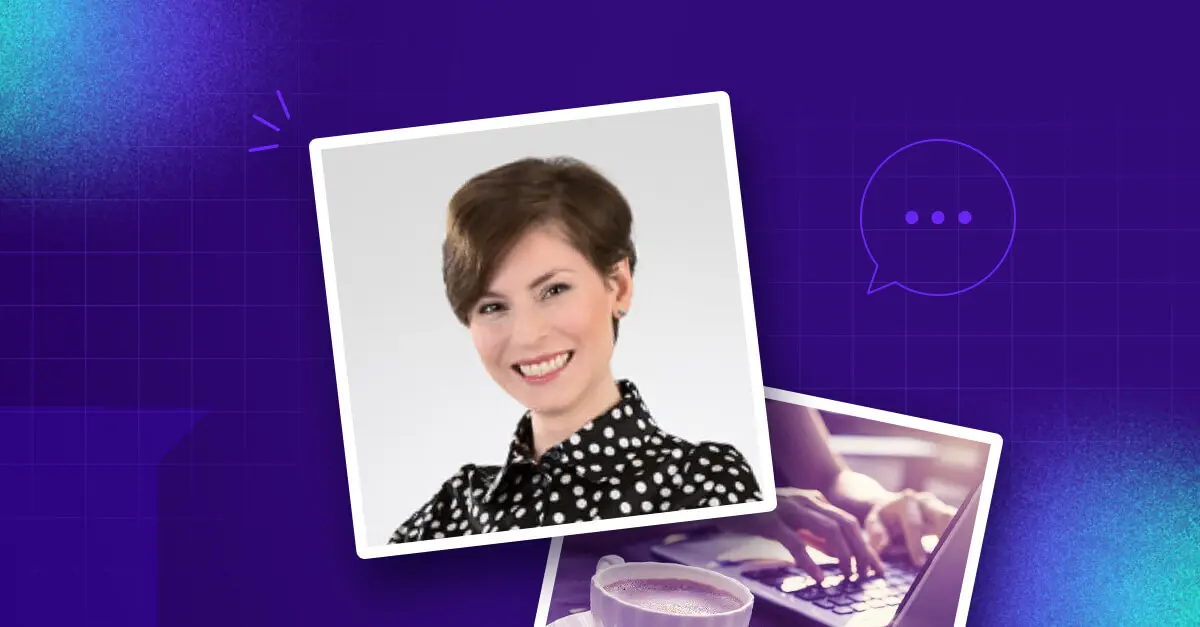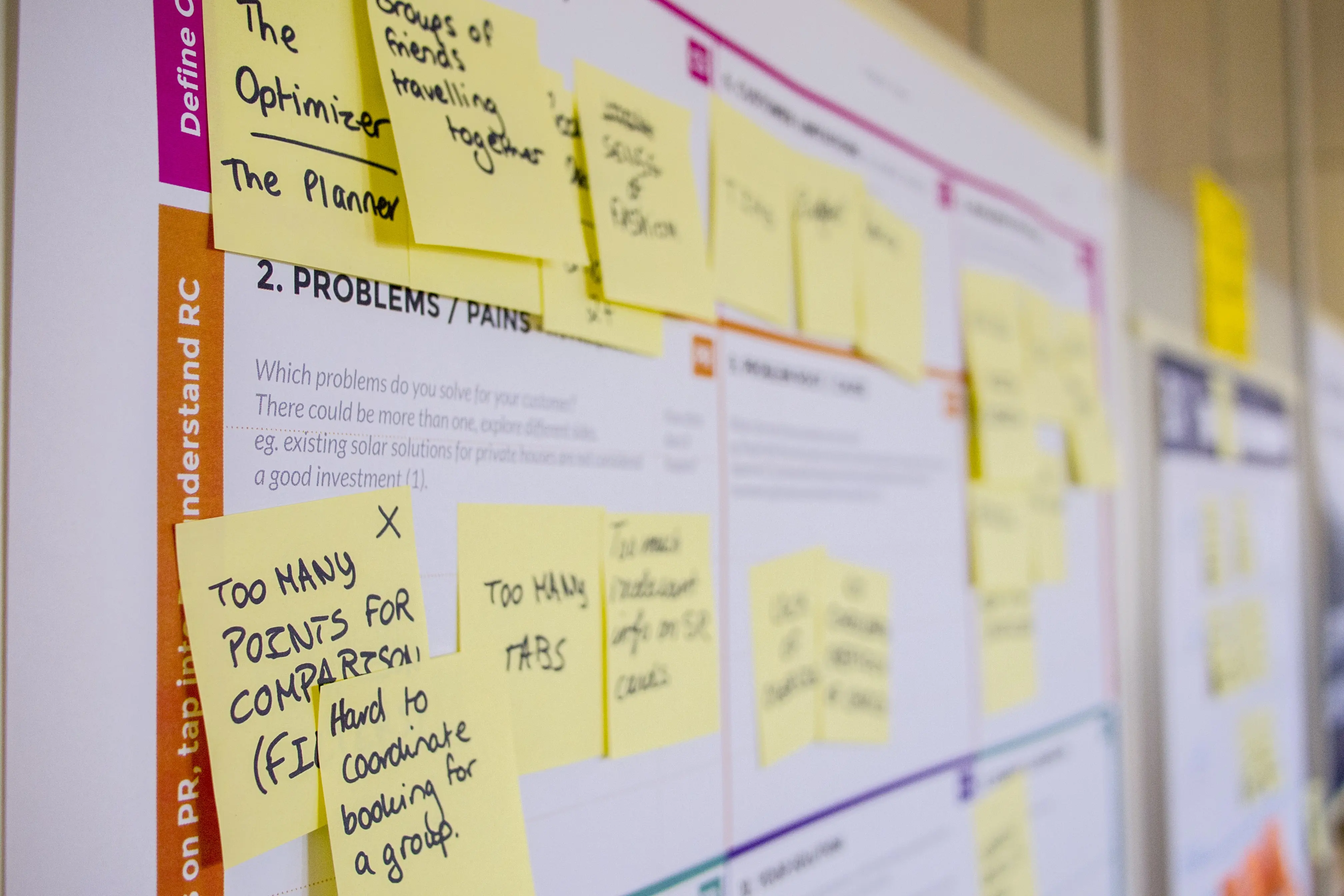
Welcome to the third edition of our brand new content series at 10Clouds in which we’ll be talking to a range of people across the business to find out what their job involves, what they love most about their workplace, and what challenges they face and overcome on a daily basis.
Today we’ll be chatting with Wiosna Wiłkomirska about the role of a Senior Agile Coach. At 10Clouds, we pride ourselves on being Agile. That means we always apply a transparent delivery process that ensures innovation and short release cycles. At the same time, we also apply Lean principles by minimizing waste, maximizing cost efficiency, focusing on quality, learning, and team empowerment.
Wiosna has been with us for almost 3 years and has participated in the work on around 15 products during her career here. Welcome Wiosna.
Could you describe in a few sentences what the role of a Senior Agile coach involves?
In this role I deal with various aspects of supporting agility in 10Clouds: serving as an agile coach for customers especially when a 10Clouds Product Delivery Manager (PDM) is not involved in the project, advising 10Clouds PDMs in their projects, defining and implementing best practices and baseline standards that we always want to keep when working for clients, as well as promoting and communicating around agility outside of the company.

Did you always know that you wanted to work in product delivery? How did your role evolve over time?
Not always, no. At university I thought I’d enjoy working at policy research institutions, but after some internships I realised that I would prefer seeing the concrete results of my work. I started my career in operational consulting. First, as a business analyst and consultant I worked on process reengineering and requirements definition. I then followed that up by supporting software delivery. I started my Agile journey around 2011/12, playing the roles of Scrum Master, Product Owner, Agile PO, and more recently Product Delivery Manager and Agile Coach.
What does a typical day look like for you?
There’s a lot of variety, but I’ll try to give you an overview of a ‘usual’ day. As soon as my son is on his way to kindergarten, I open my Slack and check if there are any urgent matters to deal with. I also go through the reminders that I set up for myself for the day. These might include finalising a project status report for a customer or sending out a team satisfaction poll.
At some point in the morning I participate in my projects’ dailies, making sure that team members are synced well and checking if I could support them somehow — for example by getting some additional devices for debugging a mobile version of a web platform. Around noon, I try to participate in the watercooler of the Product Delivery team, where we discuss general matters not necessarily related to work.
There are usually some project-related issues that come up during the day. I get involved when needed especially to ensure that problems and expectations are well communicated. I also prepare for regular project meetings, for example by selecting the appropriate retrospective format and tool.
I frequently respond to some questions from Product Delivery Managers (PDMs) on Slack or jump in on calls to support them with issues on their projects, and I have one-on-one sessions with the members of my team.Recently, we’ve also had regular internal meetings to revise and restructure our internal PDM knowledge base.

What do you love most about your role?
I enjoy the variety, and being able to constantly learn about new technological developments, as well as being able to influence the processes in product delivery. It’s also great to have interactions with many people, especially now that I’m working remotely.
Do you have a favourite product that you’ve worked on? Why was it your favourite?
A really tricky question, let me think. From a product perspective, I enjoyed working on ARROE, it’s a cool product and the delivery process was challenging, as we had to ensure communication with a physical device. But there are several other projects that I also enjoyed a lot as I worked with excellent teams both on the 10Clouds’ and customer side.
What do you think are the common challenges when it comes to implementing Agile in an organisation?
It’s a huge topic, and obviously in each organisation things will differ a bit.
If an organisation wants to become agile, it needs to actually apply Agile principles and values in practice, which frequently will run against the established management model, attitudes and culture in general.
In an agile environment, people are allowed to make decisions and take risks — a ‘self-organised team’ is at the heart of agile. This means that managers must ensure space for such self-organisation and be able to let go and allow the team just get on with the work, however they wish to. (Of course, that is feasible only as long as there is enough transparency from the team about their backlog and their progress; the company needs to ensure that the teams feel safe and comfortable with such transparency, otherwise people will obscure problems and actual status).
Another common issue, also related to the management culture, is the lack of actual empowerment of the Product Owners to drive the product, where rather than owning it, they’re more like scribes expected to just ensure that all stakeholders’ wishes become part of the backlog.
Both of the above have one consequence in common: increased decision latency, that is increased time it takes for the organisation to make decisions. To put it differently, such organisations aren’t agile - not in the sense of agile methodologies, but ‘agile’ as an adjective. They’re slower than they could be. Looking at the data about successful projects, as Standish Group has been doing, it’s clear that lower decision latency, for example by allowing the teams and Product Owners to make decisions, is key to project success. I believe this can be extrapolated to the business success of an organisation as a whole.
What advice would you give to someone just starting out in their Agile Product Delivery Career?
When it comes to knowledge - of course read through and consider the Agile Manifesto, as well as the Scrum Guide; scrum has become the go-to agile framework, so you need to know it. Equally important would be to find out more about Lean, especially to gain a better understanding of product management principles, tools and techniques.
If you’re considering becoming a Scrum Master or Agile PM, first make sure that you’re comfortable with the concept of servant leadership and allowing the team to self-organise. If you’re somebody who loves being in control and managing things closely, you may feel uncomfortable on agile projects.



